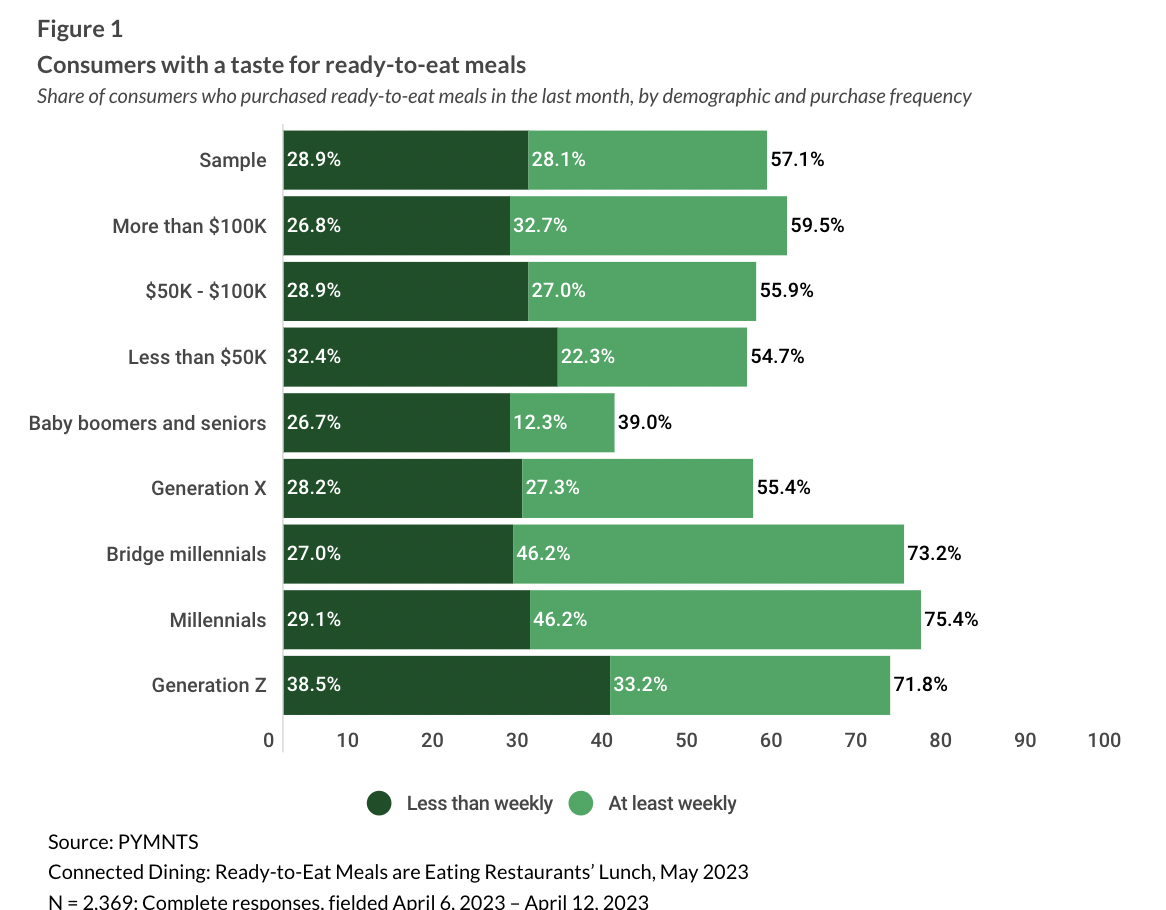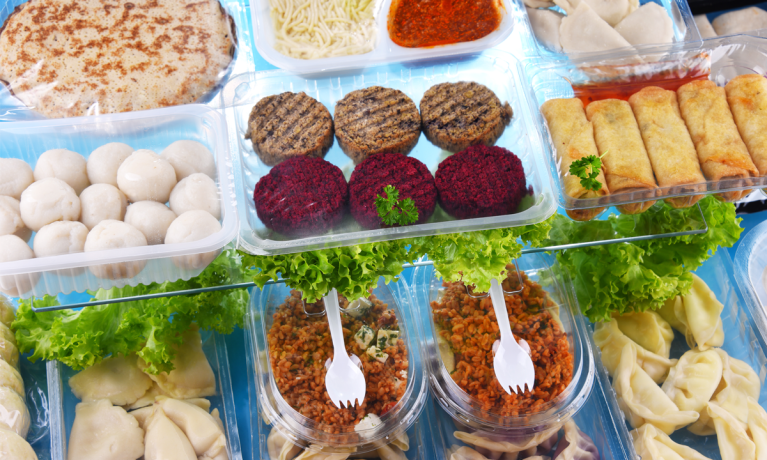As consumers’ willingness to devote time in their day-to-day routines to home cooking declines, those with the money to spare for convenience are increasingly turning toward prepared meals to offer a quick, simple solution.
By the Numbers
Research from PYMNTS’ recent study “Connected Dining: Ready-to-Eat Meals are Eating Restaurants’ Lunch,” which draws from an April Survey of more than 2,300 U.S. adults, revealed that a whopping 57% of consumers (roughly 96 million people) had bought ready-to-eat meals in the past month.

Those with the highest incomes did so more often, and those with lower incomes did so less often, though the majority of consumers across all brackets had purchased these meals. Specifically, 60% of those who make more than $100,000 per year had purchased a ready-to-eat meal in the prior month, while only 55% of those who make less than $50,000 did the same.
The Data in Context
Noting this demand, premium grocery stores that cater to bigger spenders are expanding their prepared food options. For instance, Whole Foods is reportedly considering opening commercial kitchens to make meals for its food bars and refrigerated cases.
Jeff Turnas, senior vice president of global culinary at Whole Foods, told The Wall Street Journal (WSJ) that the company is constantly exploring food production, including running its own facilities, using in-store kitchens and working with third parties.
Indeed, many grocers are adding more restaurant-quality meal options. In an interview with PYMNTS, Geoff Alexander, CEO of fast-casual chain Wow Bao, contended that supermarkets are becoming the go-to spot not only for raw groceries but also all food-at-home categories.
Advertisement: Scroll to Continue
“The supermarket has really become where consumers get all their meals at home,” Alexander explained. “It’s not just dining out now in restaurants — grocery stores are finding different ways to keep people inside the store to find their next meal. Whether it’s prepared food counters or partnering with restaurants, they’re making additional opportunities for people to do one-stop shopping.”





